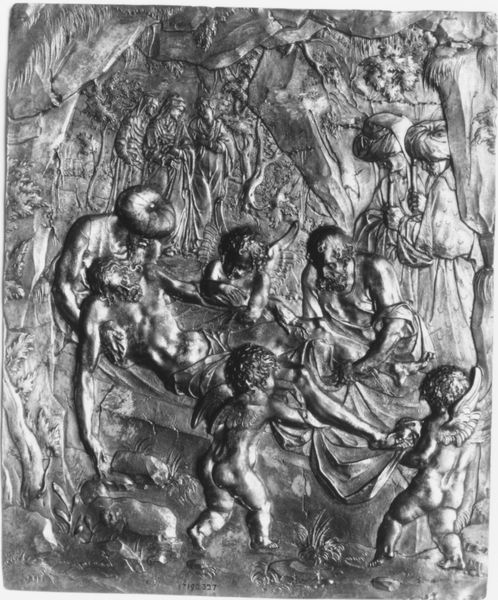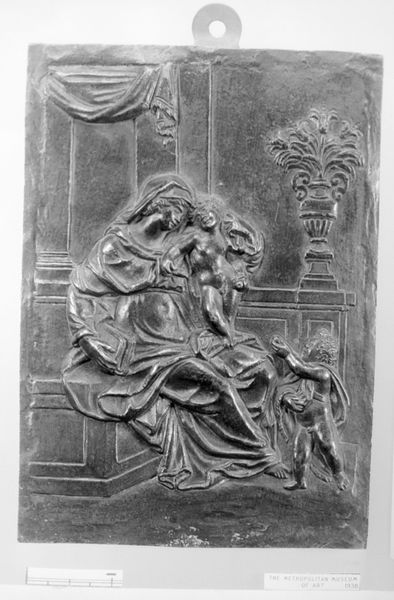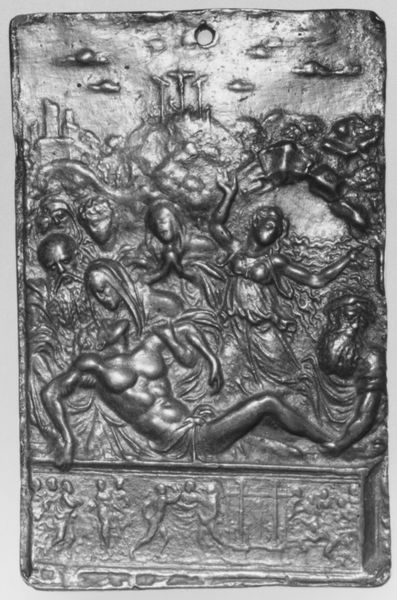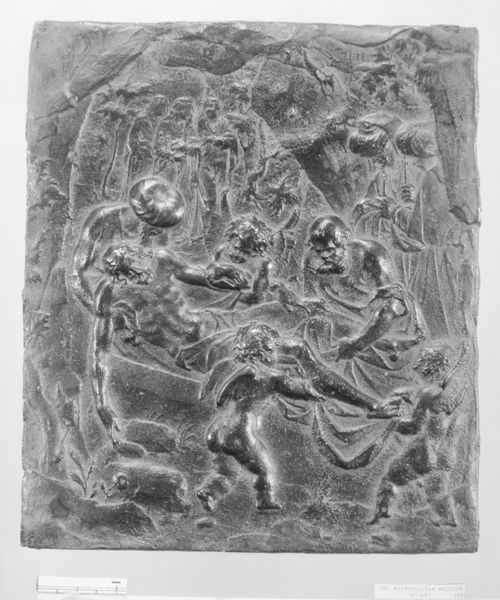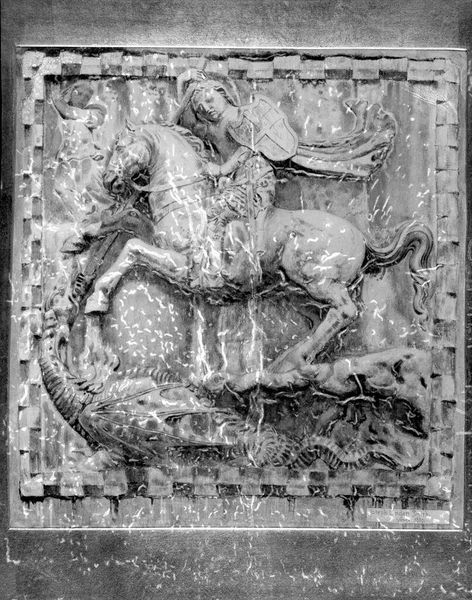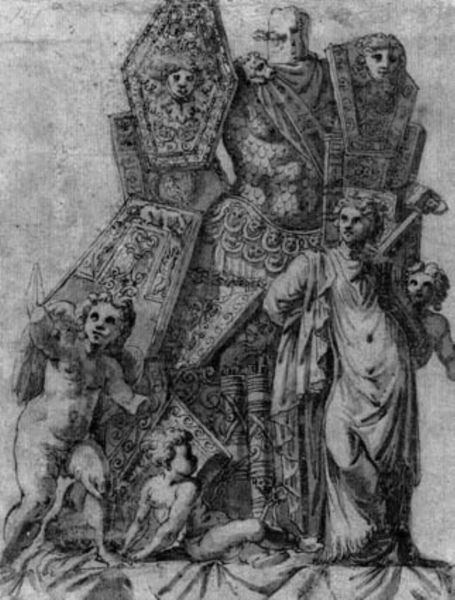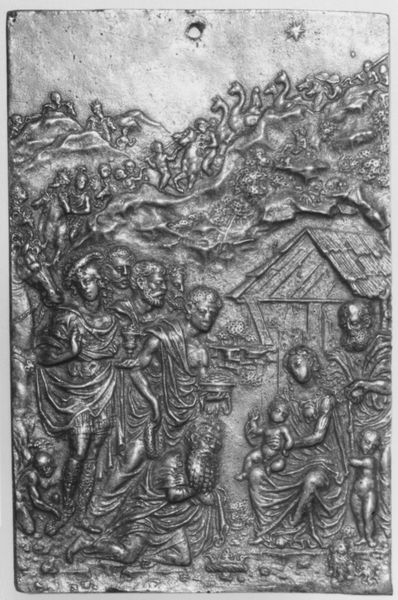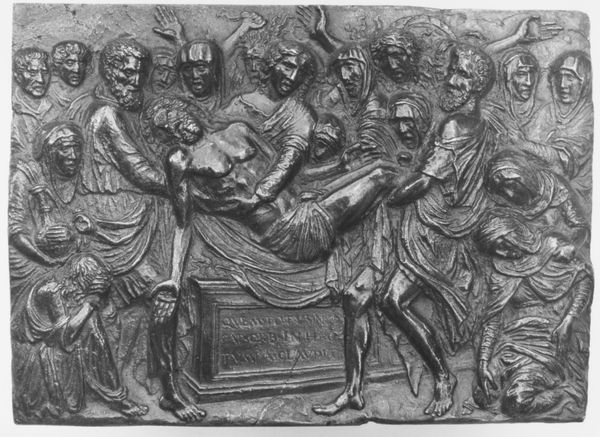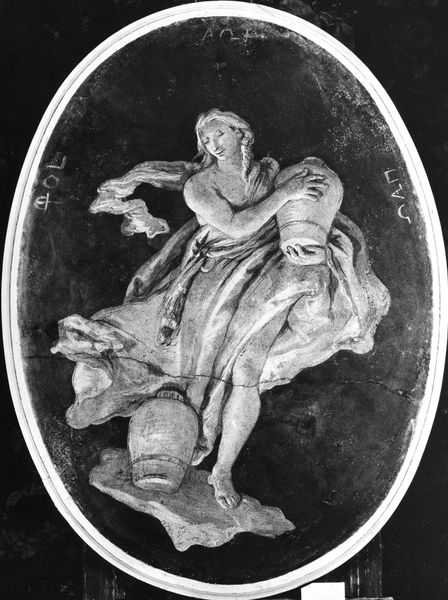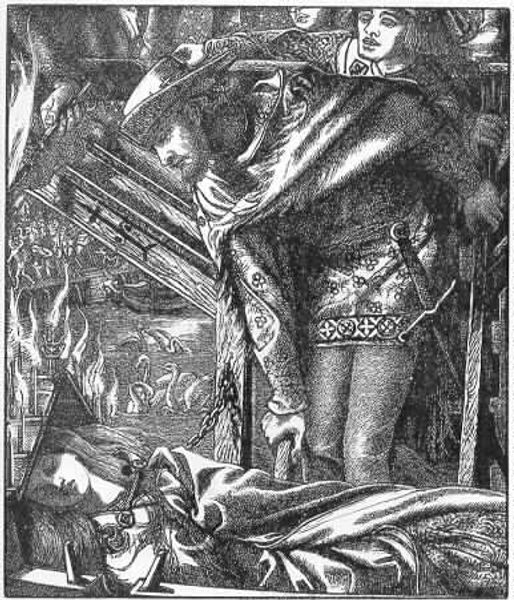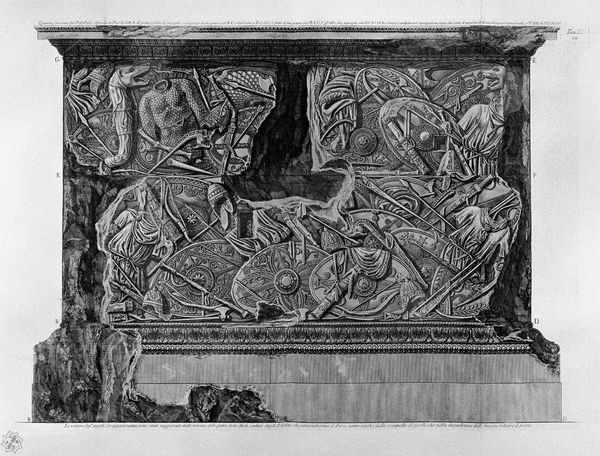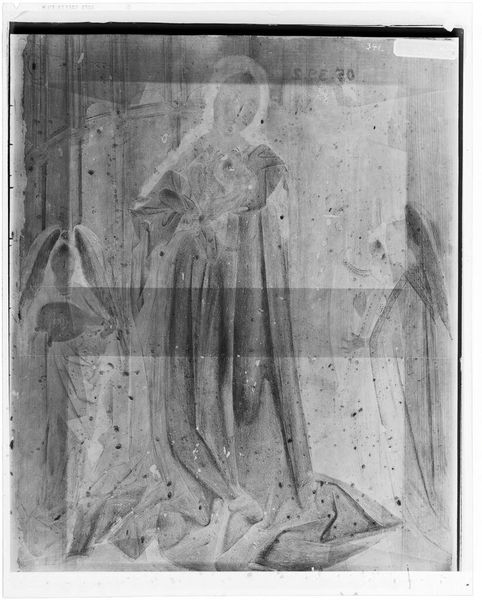
carving, relief, sculpture
#
carving
#
sculpture
#
relief
#
figuration
#
11_renaissance
#
sculpture
#
carved
#
history-painting
#
decorative-art
Dimensions: H. 6 1/2 x W. 4 3/4 in. (16.5 x 12.1 cm.)
Copyright: Public Domain
Editor: Here we have Annibale Fontana's "Sacrifice of Abraham," made sometime between 1585 and 1615. It's a carved relief, and it's pretty intense! The moment before the…well, you know. What's striking to me is how theatrical it feels, almost staged. What are your thoughts? Curator: It's fascinating how Fontana uses the visual language of the late Renaissance to grapple with complex religious and political ideas. The scene of Abraham and Isaac was ripe for interpretation during the Counter-Reformation. Notice the almost exaggerated musculature of Abraham; how does that visual choice inform the narrative? Editor: I guess it shows the strength of his faith, that he's physically capable of doing something so…awful. But it also seems to glorify him, which feels weird. Was this piece commissioned? Who would have displayed this? Curator: Yes, provenance and patronage are crucial. Consider that displaying such a scene was a declaration. For wealthy families, or perhaps a religious order, owning this sculpture would assert piety and loyalty during a time of great religious and social upheaval. It becomes less about individual faith and more about public posturing. Do you agree? Editor: That makes a lot of sense. It reframes the image for me – it's less about Abraham's personal struggle and more about the patron's desire to be seen in a certain light. So, art becomes a tool for projecting power. Curator: Precisely! It invites us to question what the function of religious art was in shaping identities during that era, not only on individual terms, but within much broader cultural dialogues and even socio-political agendas. Editor: Wow, I never thought about it that way. I came in thinking about the Bible story but leave thinking about how this object signaled status! Thank you! Curator: My pleasure. Hopefully, our discussion helped provide greater socio-historical understanding to everyone who listened!
Comments
No comments
Be the first to comment and join the conversation on the ultimate creative platform.
